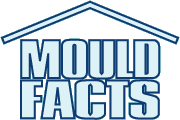|
| |||||
|
Mould growth in any environment requires moisture. One reason why basements are notorious for mould growth is because most of them are ever damp. Although moulds differ in the amount of moisture they require for growth, there is a level of moisture below which no mould can grow. Therefore, if we can ensure that organic materials in the basement are dry then we can effectively control mould growth. For example, if we can keep the relative humidity at or below 60%, we can be sure there would be little (if any) mould growth.
British Columbia Mold Testing And Mold Remediation CompaniesIf you are looking for a mold testing or mold remediation company in British Columbia, you may find one listed on the Directory of Mold Testing and Remediation Companies in British Columbia. The information in this directory was provided by the company owners or their representatives. We would therefore encourage the users of the Directory of Mold Testing and Remediation Companies in British Columbia to research the credibility of the companies they decide to hire for mold testing or mold removal services. If you are a credible mold testing or mold removal company operating in Canada and would want your services listed on our online directory, please complete a request form at Online Listing for Mold Testing and Remediation Companies in Canada. Labels: directory Can Mold On Bread Make You Sick?
Can mold on bread make you sick? Yes, if the type of mold contaminating the bread is toxigenic (toxin producer) and it has produced significant amounts of the toxin. Whether one gets sick or not also depends on individual's susceptibility. Some people may require relatively high concentrations of the toxin to get sick. Sadly, in major towns of some poor countries street people including children eat moldy food from garbage bins, but thank God they rarely get sick.
Labels: mycotoxins Testing For Mold In Home
Many homeowners often ask us if there is a way they could test for mold themselves in their homes. Although we recommend seeking professional help there are some simple tests that a homeowner can perform if mold growth is not extensive.
Testing For Visible Mold Growth Using Clear Scotch Tape Clear scotch tape can be used to sample visible mold.
Testing For Airborne Mold Using Agar Settle Plates If you can't see mold but have persistent musty or earthy smell, you may consider testing the air for mold. Musty or earthy smell is often an indication of microbial growth such as mold and some type of bacteria. A homeowner can perform preliminary tests using agar settle plates before calling a professional. Download the document "Air sampling for mold using agar settle plates" for detailed instructions on how to perform this test. You can obtain the agar settle plates from Mold & Bacteria Consulting Laboratories. Labels: Mold Agony Of Living In A Moldy House
Recently we received the email below and the sender agreed we could share it with our readers. Here, we're talking of the agony of living in a moldy house.
"Dear Dr. Kung'u: An article of yours was recently posted on a listserv in the States to which I belong, and I am curious about your work. Several years ago now, I lived in a building which had a sewer pipe leak beneath it go untended long enough for the water to soak up into the structure of the building and cause a great outgrowth of mold in the wood floors beneath the carpeting in the unit below mine. Mold was first seen growing up the walls and on clothes in picture frames and on items in the closet. Several of us in this small building had bizarre neurological problems with balance and seizures, but it took us awhile to connect the dots to exposure to neurotoxins resulting from the leak under the building. When my downstairs neighbor was diagnosed as having asthma and allergies from his mold exposure, we moved from the building. Unfortunately for my neighbor downstairs, it was not soon enough - he died three months later after producing quantities of foam and blood from his mouth. I've been working with his mother since that time, and we have finally proved that he had Trichothecene mycotoxicosis. We don't yet have quite all the information we need to prove causation for court. We haven't been able to tie the Trichothecene to a particular mold found there by means of DNA, however, there were several molds present in an earlier air sampling that can produce Trichothecene. Since it was a sewer leak, we know bacteria was involved, although the sampling we've had done hasn't tested for bacteria, and we don't really know what we need to know about what role it played in our human tragedy. Is there a good primer anywhere to read up on what to test for and how that is done? Do you do that sort of work in the U.S.? Thank you," Labels: Mold The Halloween Mold and Bacteria
During Halloween the ordinary transforms into the extraordinary: microscopic black mold may turn into giant monsters, the tiny bacteria cells could turn into huge amoebae-like giants capable of engulfing and digesting several human beings at once. Watch out on mold and bacteria on Halloween. These destructive creatures may turn into super- decomposers on Halloween and destroy all your Halloween pumpkins, Halloween costumes and even the Halloween homes.
As a microbiologist (i.e., a friend of those nasty organisms that are too tiny to be seen without a microscope) I fear the flesh-eating bacteria (Streptococcus pyogenes, and others ). During this Halloween I fear all molds and bacteria may turn into fresh-eating creatures. Given the numbers of these organisms in homes, outside in the parks, and virtually any place you may think of, I fear if these organisms turn into super flesh-eating germs...this Halloween could be the end of the human race. Take care our readers. If you enjoyed reading this fictitious Halloween story pass the link to as many of your friends as you can. For facts about mold and bacteria visit http://www.moldbacteria.com or http://www.mouldfacts.ca. Labels: Halloween Alberta Mold Testing and Remediation Companies
If you reside in Alberta and you're looking for a mold testing company or a mold remediation company you may find one in the Online Directory of Alberta Mold Testing and Remediation Service Companies. The listing is not exhaustive since we only listed those companies that requested to be listed. The user of this online directory is advised to find out the credibility of the company they decide to hire.
Labels: mold_testing Toxic Mold
What is toxic mold? Strictly speaking there is no toxic mold. The correct term is "Toxigenic Mold". Toxigenic molds refer to those molds that produce byproducts toxic to humans and animals. These byproducts (secondary metabolites) are referred to as mycotoxins. Not every mold is toxigenic. It is good to know toxigenic molds do not produce mycotoxins all the time. However, since it is difficult to tell when mycotoxins are produced (unless a test is performed) food or feed contaminated with mold should never be consumed.
Labels: Mold Symptoms of Black MoldSide Effects Of Black MoldWith the current awareness of potential health problems associated with mold growth in houses people want to know if they have been exposed to harmful black mold. All molds are potentially harmful. However, a few types have frequently been associated with adverse human health effects. Generally people are concerned when they see black mold growth in their houses or offices. The colour of the mold, however, does not determine whether a mold is harmful or not. What do you do if you have been exposed to mold? If you are not feeling sick, do not panic. Seek your doctor's advice. Remember, we are exposed to mold spores everyday. If the mold is in your house, have it removed by a professional. If the mold is in rented property, discuss the problem with the property owner to have the mold removed or look for another place to stay. It is estimated that 20% of the human population is susceptible to mold allergy. For symptoms associated with mold exposure and what to do click, Is Your Family's Health Affected by Toxic Mold in Your Home? Labels: Mold_allergy Mold Testing and Removal Companies In Ontario
When you suspect a mold problem in your home, you don't want to risk your health by trying to clean the mold yourself unless you're sure of what you're doing. Also, if you are buying a home, you want to be sure the home you buy is not contaminated with mold. There are many companies in Ontario that provide mold testing and removal services. You can find a listing of mold testing and mold remediation companies or professionals operating in Ontario by clicking Mold Testing and Removal Companies In Ontario. We know the listing is not exhaustive since we have only listed those companies that requested to be listed. It is up to the user to find out the credibility of the company they decide to hire.
Labels: Mold |
Links Mold Testing Services Mold Training Courses Homeowners Mould Testing Kits Frequently Asked Mould Questions Toxic Mold Information www.webbuyerschoice.com 
Previous Posts This blog has moved Mold In Basement Elevated Levels of Airborne Fungal Spores Signs Of Mold In My House Mold Testing In Toronto Mold and Moisture Does Mold Contribute to Respiratory Disease and Al... Mold Testing In Toronto Mold And Bacteria In A School Residential Air Quality Testing Archives
|
||||

